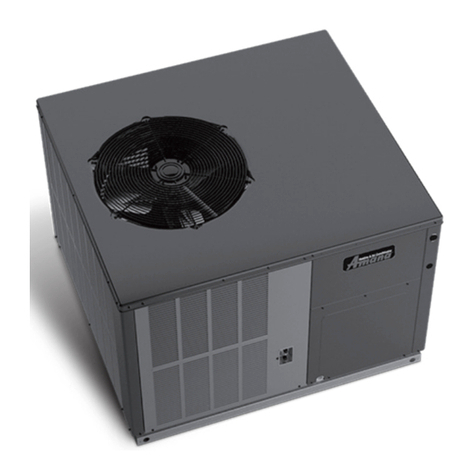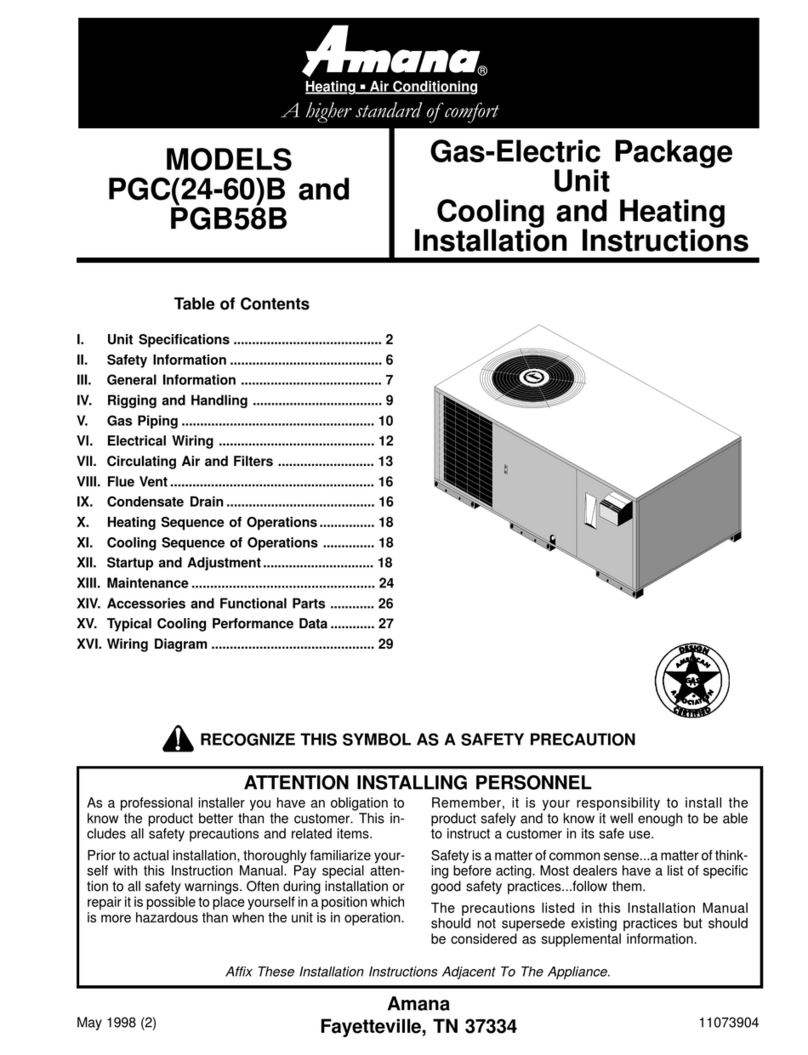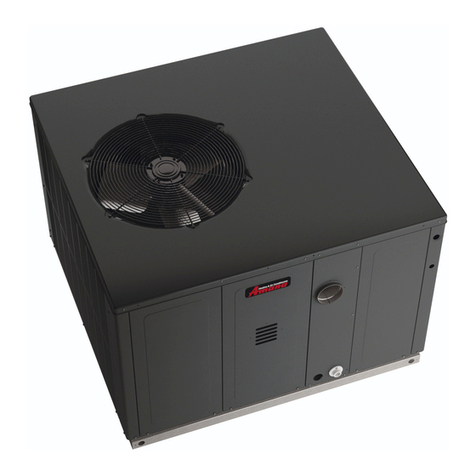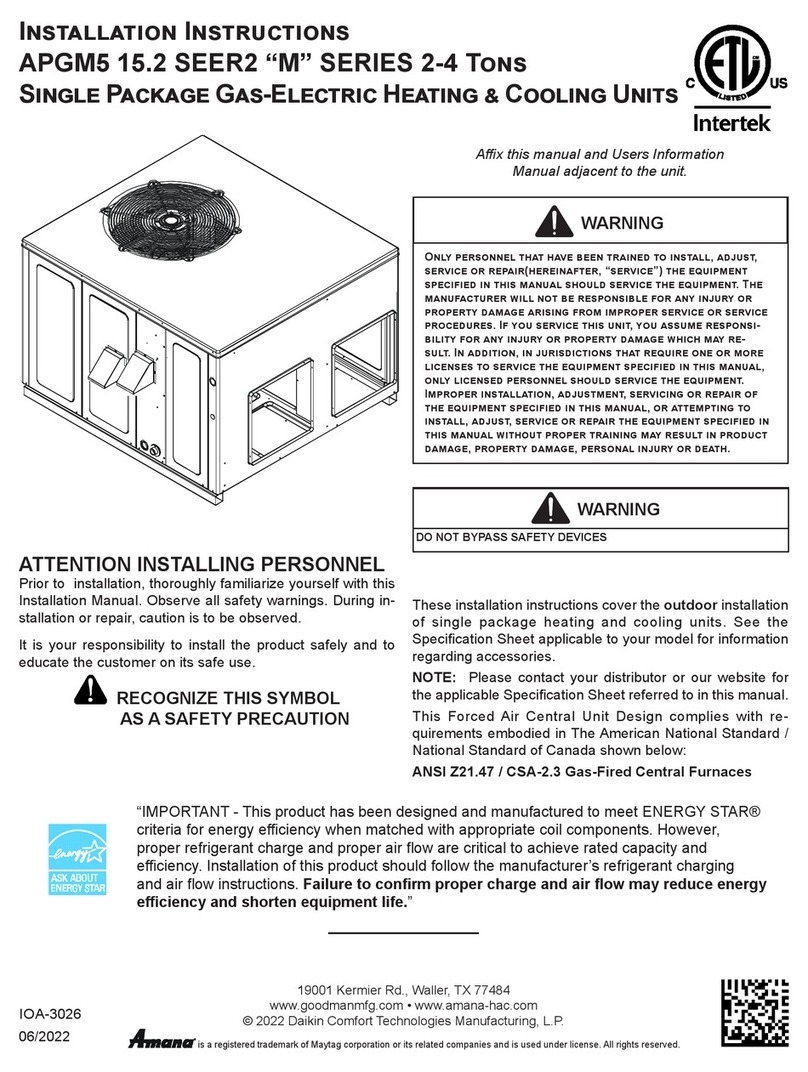
7
B149.1.
UNIT LOCATION
WARNING
•
proper condensate drainage, the unit must be mounted
level.
•
a building,and at least three feet above any forced
air inlet located within ten feet. The economizer/
manual fresh air intake/motorized fresh air intake
and combustion air inlet mounted on the unit are not
• To avoid possible corrosion of the heat exchanger,
do not locate the unit in an area where the outdoor
air (i.e. combustion air for the unit) will be frequently
contaminated by compounds containing chlorine or
swimming pool chemicals and chlorine bleaches, paint
stripper, adhesives, paints, varnishes, sealers, waxes
(which are not yet dried) and solvents used during
construction and remodeling. Various commercial and
industrial processes may also be sources of chlorine/
• To avoid possible illness or death of the building
occupants, do NOT locate outside air intake device
(economizer, manual fresh air intake, motorized fresh
air intake) too close to an exhaust outlet, gas vent
distances required, consult local codes.
•
protection, proper operation, and service access (see
appendix). These clearances must be permanently
maintained.
•
unit must never be obstructed. If used, do not allow
the economizer/manual fresh air damper/ motorized
fresh air damper to become blocked by snow or debris.
In some climates or locations, it may be necessary to
elevate the unit to avoid these problems.
• Damper must be in open position when appliance main
burner(s) is operating.
Le registre doit être ouvert lorsque tout brûleur principal
de l’appareil est en état de fonctionnement.
• When the unit is heating, the temperature of the return
air entering the unit must be between 50° F and 100° F.
• Units manufactured on or after May 1, 2017 are not
permitted to be used in Canada for heating of buildings
or structures under construction.
When the unit is installed on the ground adjacent to the
building, a level concrete (or equal) base is recommended.
Prepare a base that is 3” larger than the package unit
footprint and a minimum of 3” thick.
•
water from higher ground can collect in the unit.
• The top of the unit should be completely unobstructed.
If units are to be located under an overhang, there
should be a minimum of 48” clearance and provisions
overhang.






























